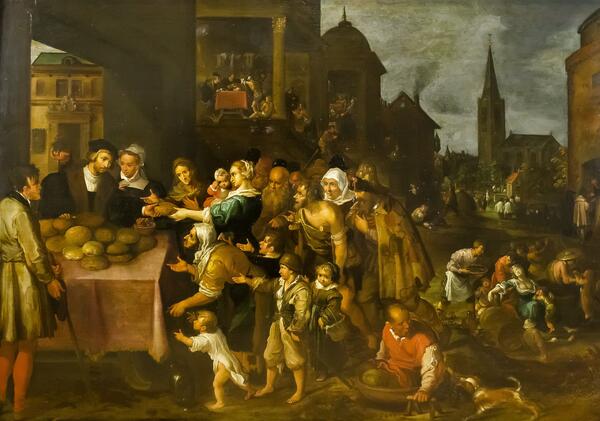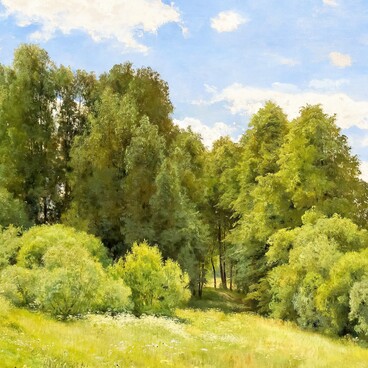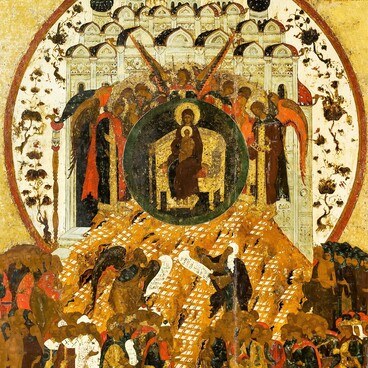On the third day, Abraham saw the right mountain from afar. He told his two other sons to stay on the road with the ass and wait. ‘And Abraham took the wood of the burnt offering, and laid it upon Isaac his son; and he took the fire in his hand, and a knife; and they went both of them together.’ That is the scene that was depicted by Jacob Grimmer.
It is of interest that the nature plays a more important role in the picture than the biblical story itself. The artist painted the landscape in the style of the world landscape that was popular in the 16th century Netherlands. Such paintings were called world landscapes because of how tiny the figures of people were depicted in comparison with nature. The traditional layout included a high skyline, a composition with several levels, and a great deal of detail.
The high skyline gave the opportunity for Grimmer to add the motifs of the national landscape to the painting: various buildings, a tower by a pond surrounded by trees, and a road stretching to the horizon. Over time, Jacob Grimmer would eventually abandon the poetic notion of an ideal nature and turn to the subjects of everyday life.
The works of Pieter Bruegel the Elder had a decisive influence on Grimmer. Like Bruegel, the artist often created allegorical landscapes such as ‘Four Seasons’, ‘The Twelve Months’, and ‘The Tower of Babel’. However, experts considered his style to be less sophisticated and even somewhat naive. Grimmer’s legacy mostly includes landscapes depicting peasant celebrations and biblical stories.
The painting was donated to the museum from the collection of Andrey Likhachov in 1962.




